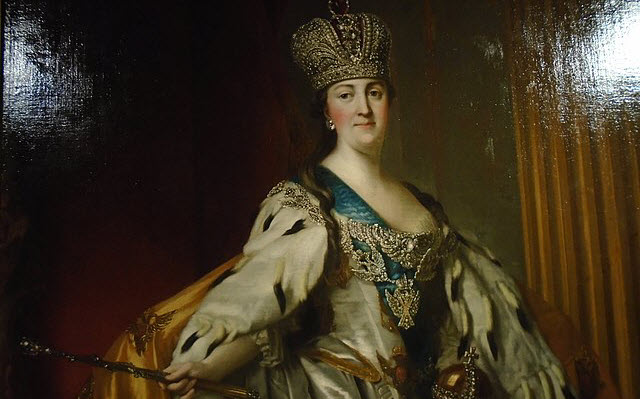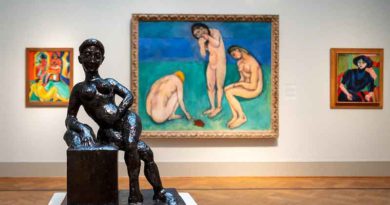Catherine the Great’s Furniture: A Legacy of Luxury and Craftsmanship
Catherine the Great was one of the most important leaders in Russian history. She ruled as Empress of Russia from 1762 to 1796. During her reign, she made a big impact on the arts and culture of her country. One part of her legacy that still stands out today is her amazing furniture collection. Catherine used her furniture to show her love for European design while also adding a unique Russian touch. Let’s take a closer look at what made Catherine the Great’s furniture so special.
The Inspiration Behind the Furniture
Catherine the Great loved European art, especially the French Rococo style and Neoclassical design. The Rococo style had lots of curvy shapes, gilded accents, and fancy details. It was fun and decorative, perfect for showing off the wealth of the Russian court. Later in her reign, Catherine became more interested in the Neoclassical style. This style was inspired by ancient Greek and Roman architecture, with straight lines, symmetry, and classic details like laurel wreaths and Greek columns. Catherine wanted her palaces to be like those in Paris or Versailles, so she brought French and English craftsmen to Russia to make sure her furniture fit her vision.
If you want to explore other cultural attractions, be sure to check out the best museums in St. Louis for another journey into art and history.
Unique Materials and Craftsmanship
The furniture made during Catherine the Great’s time wasn’t just about design; it was also about the materials used. She loved exotic woods like mahogany, ebony, and rosewood. These woods weren’t just strong; they also showed wealth. The furniture also used gilded bronze (called ormolu) for decoration. Ormolu was used to make beautiful motifs like lions and vines that added extra luxury. The fabrics were also very fancy—upholstery made from silk, velvet, and brocade was common. The colors were rich, like deep reds, golds, and blues, all chosen to make her palaces look grand.
Many of Catherine’s furniture pieces had symbols of power, like the double-headed eagle of Russia or scenes from Greek and Roman mythology. This mix of symbols showed Catherine’s vision of a Russia that was both powerful and sophisticated.
Famous Rooms and Furniture Collections
Catherine the Great’s furniture was used to decorate her many palaces. Here are some of the most famous places where her furniture was displayed:
- The Winter Palace: This palace in St. Petersburg was one of Catherine’s main residences. The Malachite Room was one of the highlights. The furniture here had intricate malachite panels, gilt bronze accents, and velvet upholstery. Malachite symbolized Russia’s natural resources, and this room was designed to impress guests and show off the craftsmanship of the Russian Empire [29].
- The Catherine Palace: This palace, located in Tsarskoye Selo, is famous for the Amber Room. Often called the Eighth Wonder of the World, this room was decorated with panels of amber, gold leaf, and mirrors. The furniture here matched the room’s extravagance with pieces made from the finest materials [29].
- Pavlovsk Palace: This palace was built for Catherine’s son, Grand Duke Paul. The design here focused more on Neoclassical elegance, with clean lines, symmetry, and classical motifs like urns and laurel wreaths. The furniture here showed Catherine’s shift to simpler, more refined styles.
If you love grand design, why not discover the beauty of Ha Ha Tonka State Park, which is also full of historical charm and elegance.
Furniture Styles and Key Characteristics
Catherine the Great’s furniture was a mix of Rococo and Neoclassical styles. Here’s what made each style unique:
- Rococo Style: This style is known for complex decoration, curvy lines, and intricate carvings. Catherine brought many French designers to her court to make pieces in this style. The Rococo pieces were often asymmetrical, which added to their charm.
- Neoclassical Style: As Catherine grew older, her taste shifted toward Neoclassicism. This style took inspiration from Greek and Roman art, with straight lines, balance, and symmetry. Catherine loved how this style represented order and grandeur, fitting well with her vision for a modern Russia.
Secretary desks, side tables, and writing tables were some of the signature pieces in her furniture collection. These items were not only beautiful but also practical. Many had hidden compartments and were decorated with delicate carvings and gilded accents.
The Impact of Catherine’s Furniture on Russian Design
Catherine the Great’s love for European furniture changed the way furniture was made in Russia. By bringing European craftsmen to her court and using Western styles, she influenced a whole generation of Russian designers and craftsmen. This blend of European elegance with traditional Russian elements became a hallmark of Russian Imperial design. It wasn’t just about furniture—this style influenced everything from architecture to decorative arts in Russia.
Today, you can still see Catherine’s furniture in places like the Hermitage Museum in St. Petersburg. These pieces are a testament to her incredible vision and have been preserved to share her legacy with the world.
Lasting Legacy and Modern Inspiration
Catherine the Great’s furniture has a legacy that continues to influence modern designers. High-end interior designers often draw inspiration from the Neoclassical forms and luxurious materials she favored. Even today, reproductions of her most famous pieces, like the furniture from the Malachite Room or the Amber Room, are popular with people who want a touch of imperial elegance in their homes.
Her furniture is not just a part of Russian history—it’s also part of the history of furniture design around the world. The focus on rich materials, detailed craftsmanship, and royal aesthetics has left a lasting mark on how people think about luxury and opulence in interior design.
Where to Find Catherine the Great’s Furniture Today
If you want to see Catherine the Great’s furniture in person, there are a few places you can visit:
- Hermitage Museum: Located in St. Petersburg, this museum has many original pieces from Catherine’s collection.
- Catherine Palace: You can visit the Amber Room and see other famous pieces.
- Private Collections: Some pieces are also in private collections and are occasionally displayed in special exhibits.
For more historical exploration, the best museums in St. Louis also offer a glimpse into unique art and culture, much like Catherine’s treasures.
Fun Facts and Myths
- Myth of Erotic Furniture: There is a rumor that Catherine the Great owned erotic furniture, but there is no solid proof of this. This myth is likely just one of the many tales about her personal life.
- The Amber Room: The Amber Room was lost during World War II. It has since been recreated, but the mystery of the original room still fascinates many people.
- French Flair: Catherine was so dedicated to having her palaces match the elegance of French courts that she hired French designers to work on the rooms of her Russian palaces.
Catherine the Great was more than just a ruler; she was a true patron of the arts. Her furniture collection is one of her many legacies that show her taste for luxury, elegance, and sophistication. From the Rococo flourishes of her early years to the Neoclassical order of her later years, her furniture helped set a new standard for royal opulence. Catherine’s influence went beyond Russia, inspiring furniture design across Europe and into modern times. Her palaces, filled with art and finely crafted furniture, were not just homes but symbols of power and cultural refinement.
Whether you’re visiting a museum or simply admiring photos of her palaces, Catherine the Great’s furniture continues to inspire and amaze. It’s a reminder of how art, design, and a bit of luxury can shape history.
If you’re curious about other interesting places and stories, discover the St. Louis City Museum for an experience that’s rich in art and creativity.








